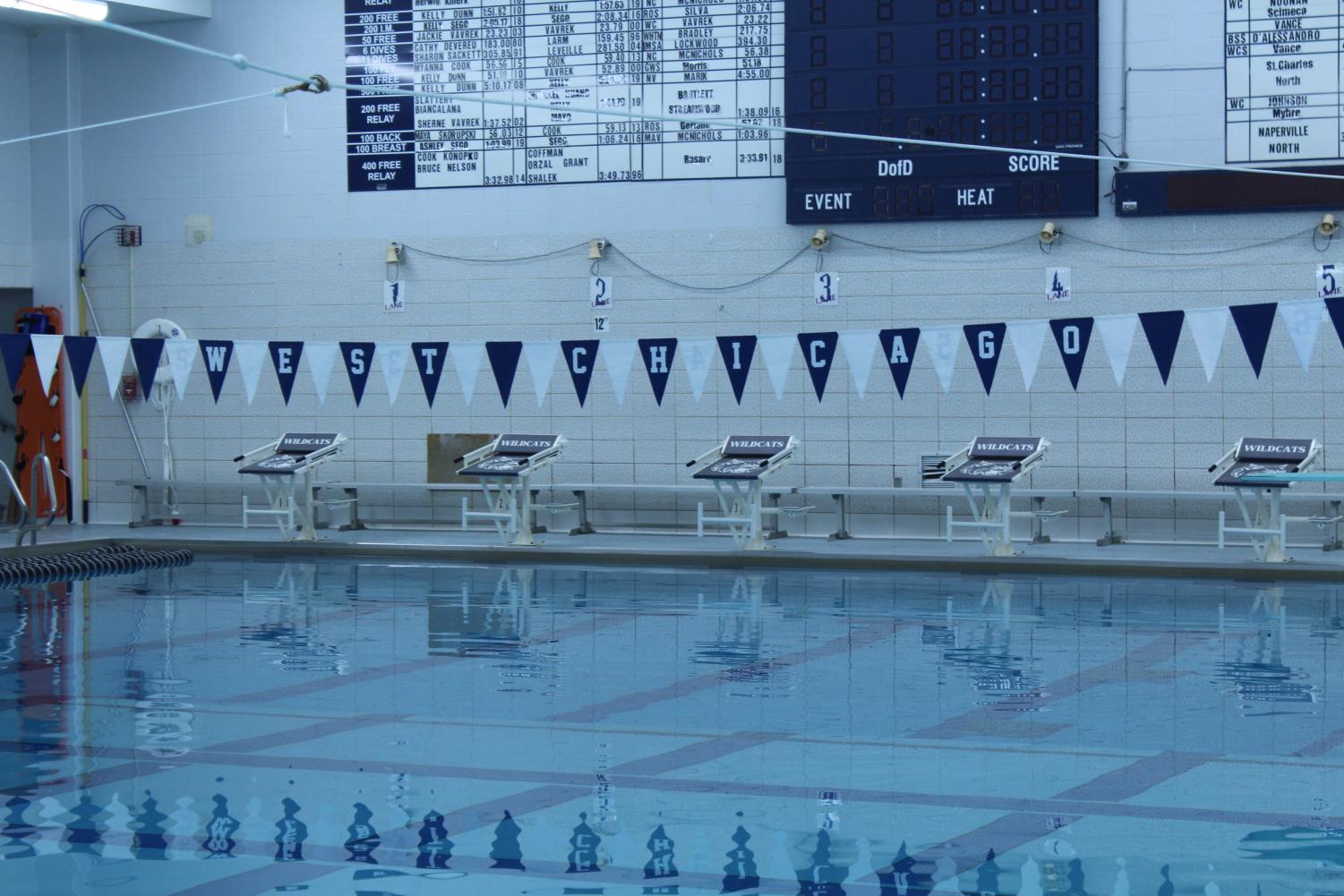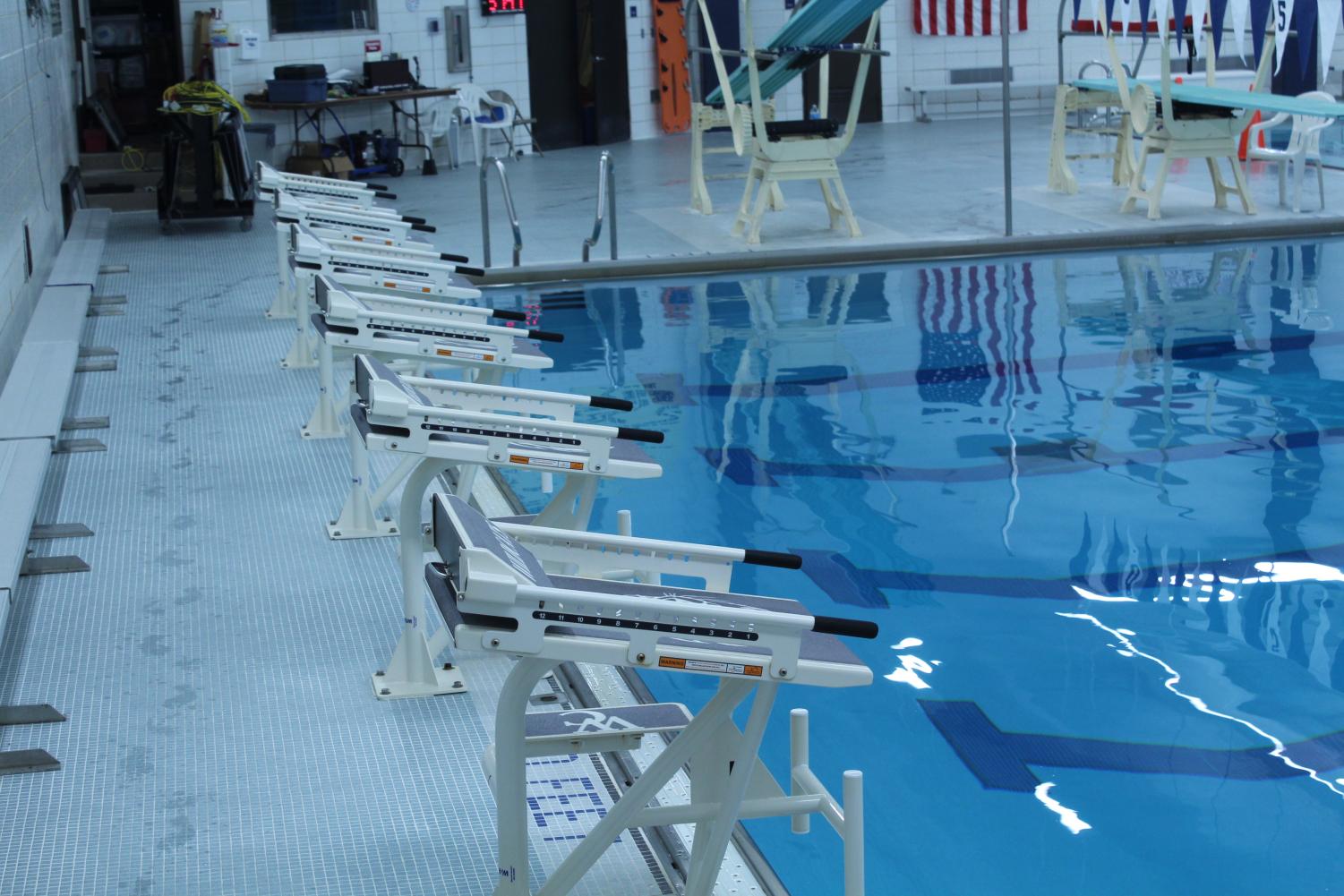[EDITORIAL] Eliminating the swimming unit would be a splash
Photo by Jonathan Borba
October 26, 2022
Imagine you are walking into the pool: humidity slams your face, and the smell of chlorine hits your nose. The farther in you walk, the stronger the smell of chemicals becomes as it surrounds your nose. Now you notice the pool, blue as the sky, with a mirror-like reflection and 30 students swimming – or pretending to swim – in the lukewarm water.
There is also a curious group of fully-dressed individuals seemingly walking laps around the pool.
These are the students who refused to participate in the mandatory swimming unit in West Chicago Community High School’s P.E. classes.
All students in this high school are required to take a swimming unit in the school’s P.E classes. The swimming unit does not last for long: usually a minimum of two weeks.

According to a poll conducted by the Wildcat Chronicle the week of Oct. 17, surveying 100 students in dens, 49.5% of respondents believe swimming is a good life skill to learn or have. It must be said, however, that 53% of students said they have not participated in swimming in P.E. class at school, which takes into account the pandemic and the lack of in-person classes.
Swimming in P.E. class is sometimes considered a hassle because students must get to the swimming locker rooms on the far north side of the school, change, line-up for attendance, swim for about 20 minutes, and then change back to their clothes.
Twenty minutes each day is not enough to learn how to swim for those who have never been in a pool before. Some experts indicate 20-25 hours is a more reasonable time for swimming aptitude.
The students who do know how to swim (and are participating in P.E. class) just swim their laps during this period. After completing their laps, the teachers give these students free time to swim, or play basketball with the hoops located next to the pool.
The students who do not know how to swim, but are willing to get in the water, just walk from side to side in the pool. Typically, they walk five laps, then engage in some sort of game involving kickboards, or “Sharks and Minnows”. They must stay in the water, or they lose points.
The students who choose not to enter the water simply walk, fully-dressed, around the pool deck for the entire class period. They risk losing points for that day and/or week of swimming. For many students, swimming is the main cause of a failing grade in P.E.
There are students who enjoy the swimming unit in P.E class, or find it to be valuable. In fact, in our poll of 100 WEGO students, the Wildcat Chronicle found that while 44% of students believe the swimming unit should not be required, 19% believed it should, and another 30% said “maybe”.

Recent research conducted by ValuePenguin (Lending Tree) indicates that 17% of American’s don’t know how to swim, almost one in five people. Programs/classes are available, however, that can teach people guide and teach them how to swim: some, like Goldfish Swim School, have taken off in the last few years, suggesting that there is a need for quality swim lessons.
Honestly, we at the Wildcat Chronicle do not believe WEGO students are really learning how to swim at all – they are merely doing exercises in the pool. While it is important that students who do not know how to swim learn these skills, realistically, people will not learn how to swim in just two weeks. If they are to learn how to swim, the teachers need to get into the pool (and some do) and provide direct swim instruction.
There is no good alternative to avoid this unit in P.E. classes because students lose points either way if they do not participate.
If swimming classes are going to be offered there should be a choice for students who would like to participate. We believe swimming classes should run through exclusively in periods 9 and 10, so as to avoid going through the day with wet, ugly hair. (Although many people believe you can get sick from walking around with wet hair, that is not the case: however, we do believe wet hair is uncomfortable.)
One final option WCCHS could consider is creating a Swimming Club where people who do not know how to swim can go and learn how to swim, or just hang out in the pool. A Swimming Club could also be used to teach safety lessons for those students who would be interested in being a lifeguard.



![[EDITORIAL] Eliminating the swimming unit would be a splash](https://wildcatchronicle.org/wp-content/uploads/2022/10/Wildcat-Chronicle-Editorial-Swimming-900x600.jpg)

Leslie Fireman • Oct 30, 2022 at 9:42 am
Good point, Tyler. We wish more den teachers had posted the survey so we could have analyzed more data. The good news is, though, that there is a 10% margin of error in a sample size of 100, which, for a student newspaper, is acceptable!
Tyler • Oct 29, 2022 at 10:05 pm
Not sure a survey of 100 students, less than 5% of the population of the school, is big enough
Fernando.C • Oct 27, 2022 at 4:46 pm
Personally I love swimming even when I didn’t know how to but that’s just me.